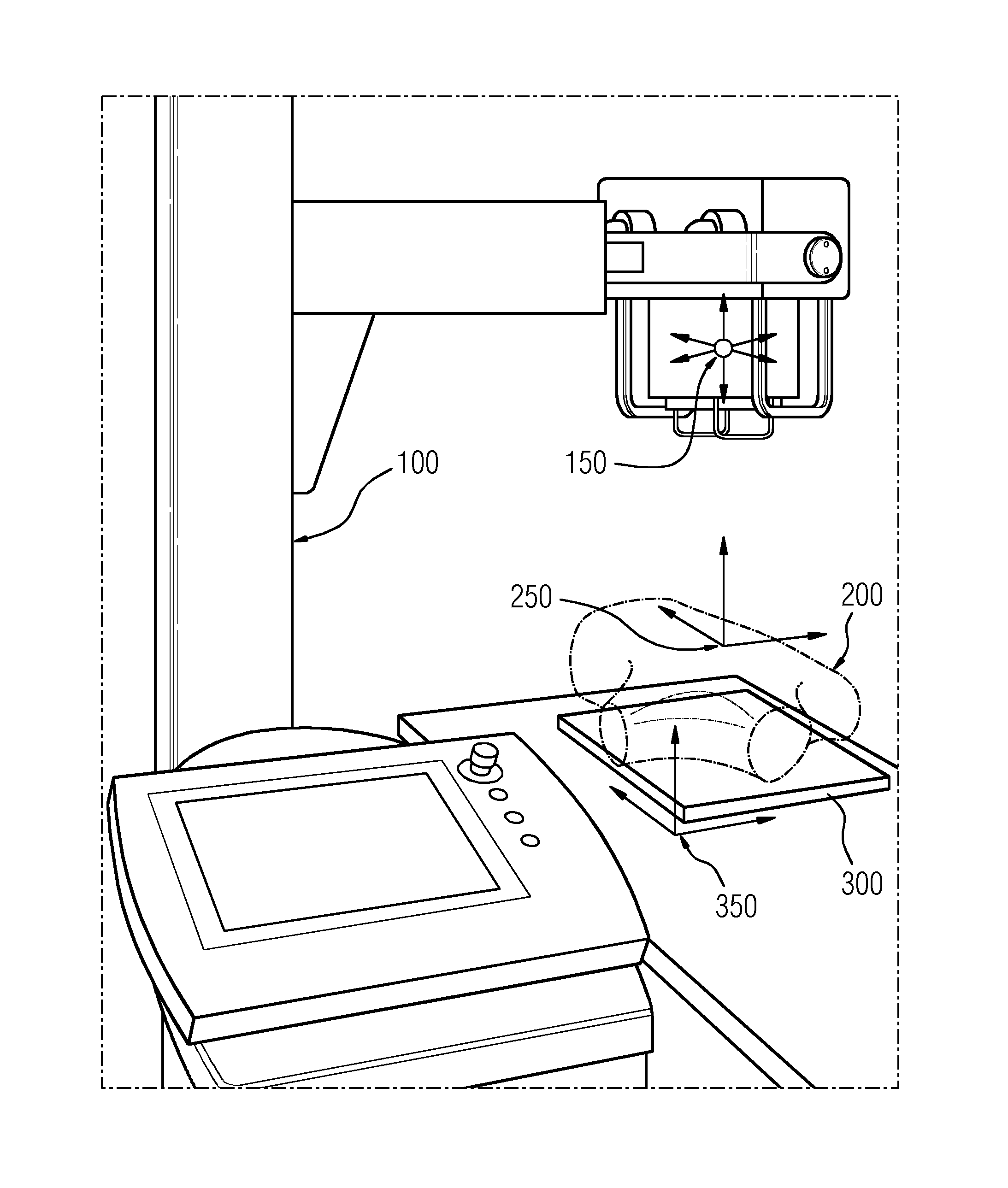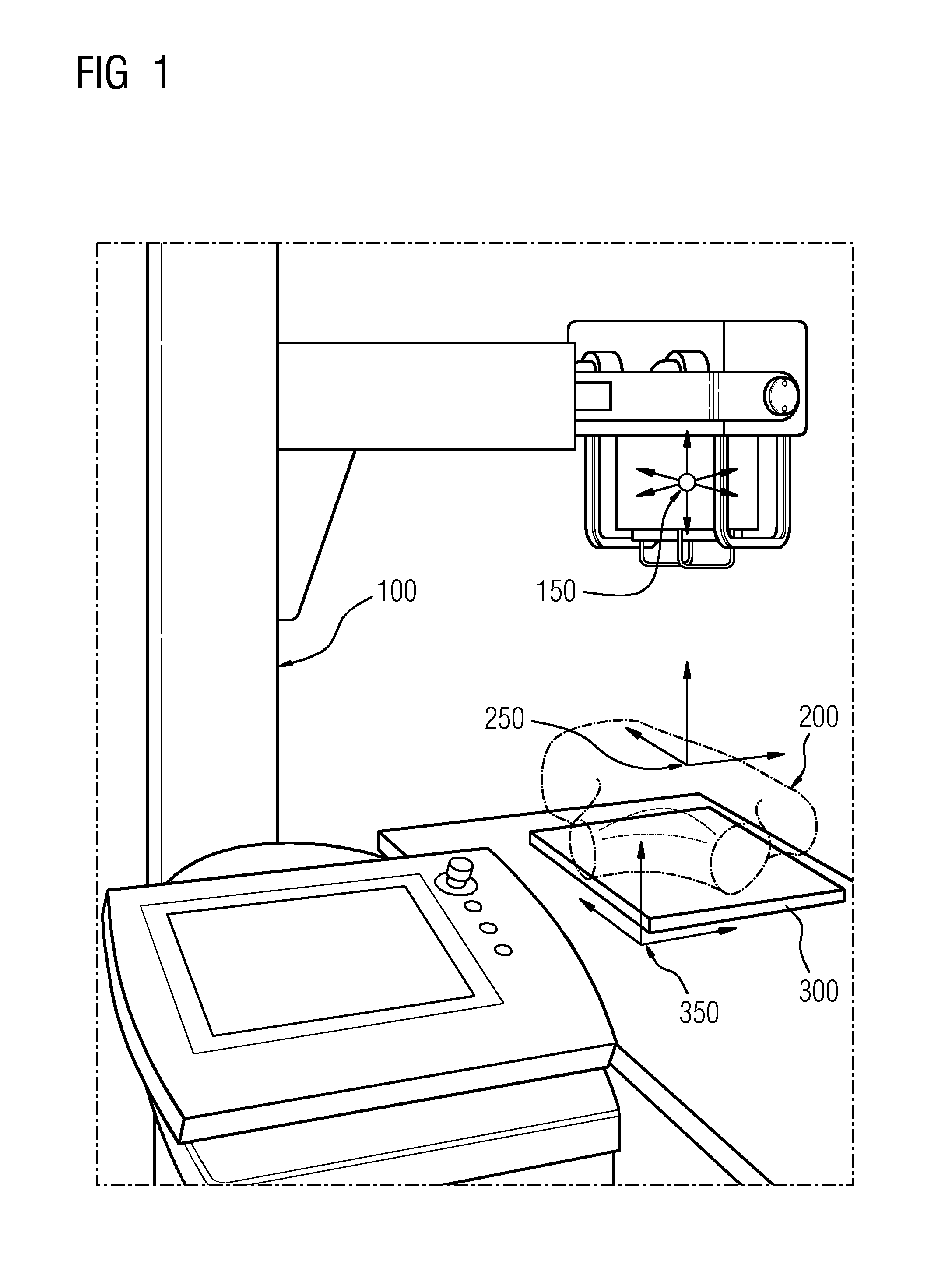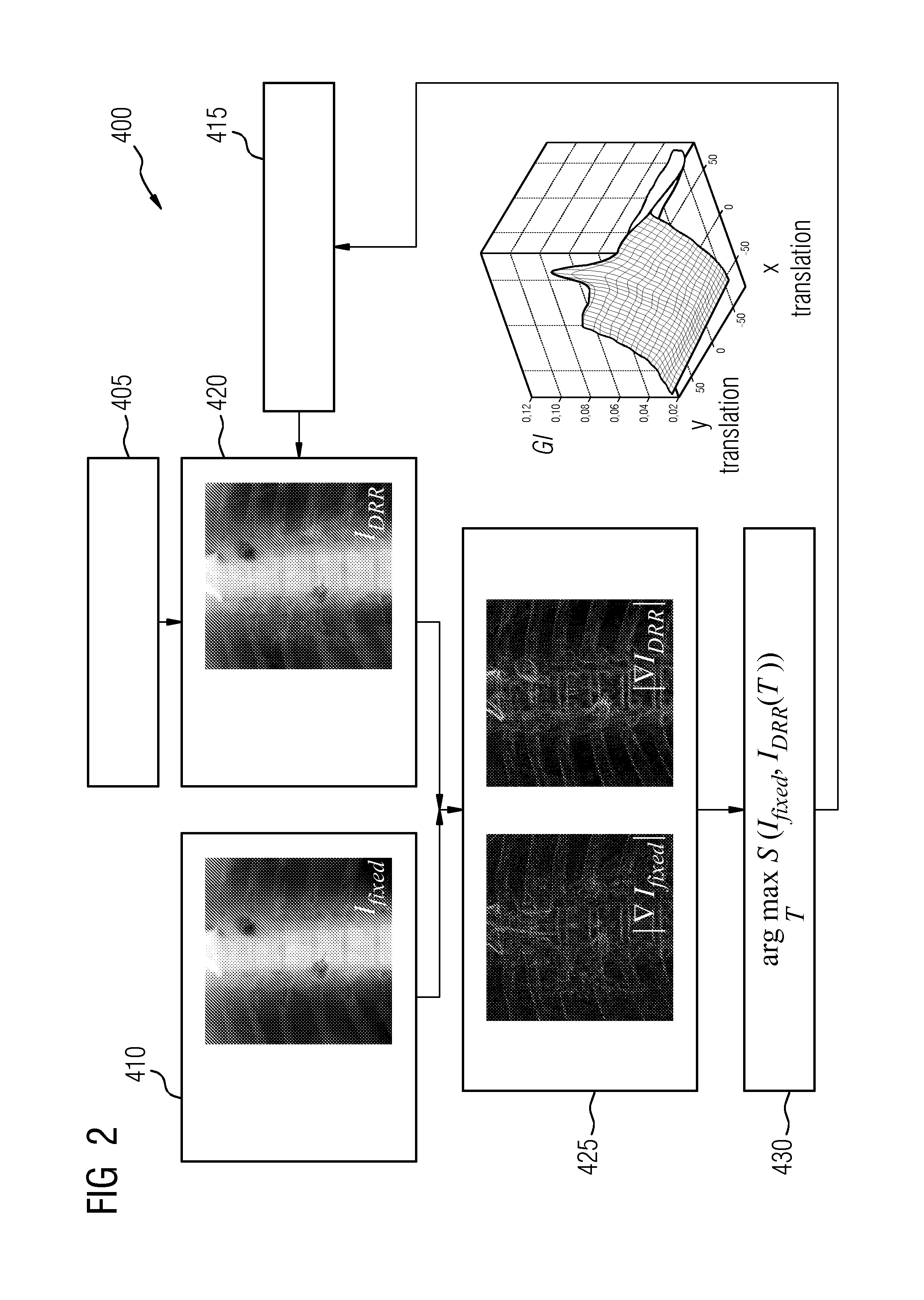3D-2D image registration for medical imaging
a 3d-2d, medical imaging technology, applied in image enhancement, image analysis, instruments, etc., can solve problems such as geometric calibration limits the general application of conventional 3d-2d registration methods to x-ray imaging systems involving an unconstrained source-detector geometry, and the geometric relationship of x-ray source and detector must be known and fixed
- Summary
- Abstract
- Description
- Claims
- Application Information
AI Technical Summary
Benefits of technology
Problems solved by technology
Method used
Image
Examples
Embodiment Construction
[0055]The invention offers at least the following advantages.
[0056]3D-2D Registration Method With 9 DoF (9 degrees of freedom)
[0057]The 3D-2D registration method according to the invention may process 2D images, for example 2D projection x-ray images, acquired with an imaging system having an unconstrained source-detector geometry. It includes parameters, for example additional 3 DoF parameters, representing the source-detector geometry, such that 2D images can be accommodated without knowing the calibration. Thus, it is well suited to imaging systems, for example mobile radiography systems, where the x-ray source may be freely positioned with respect to the (patient and) detector.
[0058]The 3D-2D registration method according to the invention may be feature-based or intensity-based. Feature-based methods and intensity-based methods are distinguished by the way that they determine, for example measure or quantify, the similarity between two images. The feature-based method uses extra...
PUM
 Login to View More
Login to View More Abstract
Description
Claims
Application Information
 Login to View More
Login to View More - R&D
- Intellectual Property
- Life Sciences
- Materials
- Tech Scout
- Unparalleled Data Quality
- Higher Quality Content
- 60% Fewer Hallucinations
Browse by: Latest US Patents, China's latest patents, Technical Efficacy Thesaurus, Application Domain, Technology Topic, Popular Technical Reports.
© 2025 PatSnap. All rights reserved.Legal|Privacy policy|Modern Slavery Act Transparency Statement|Sitemap|About US| Contact US: help@patsnap.com



